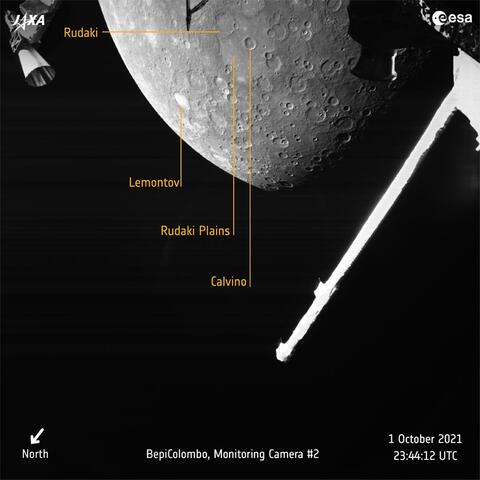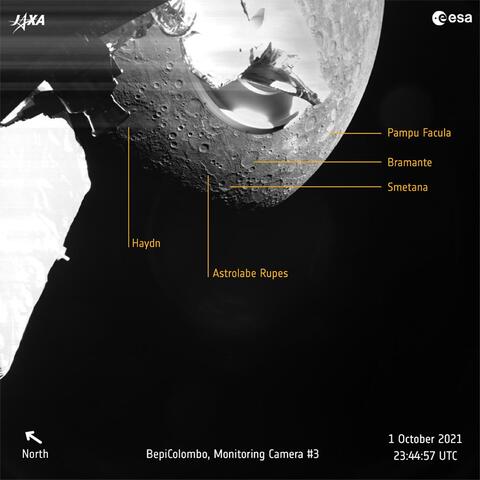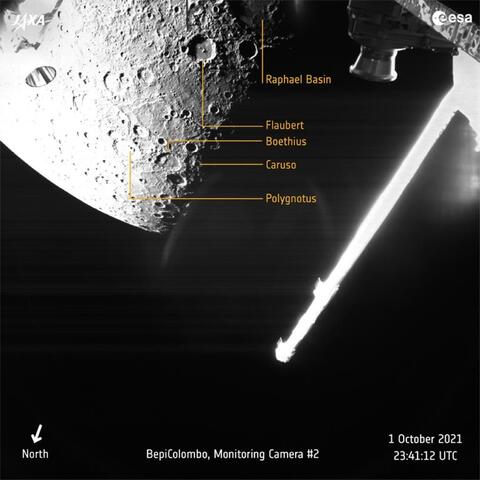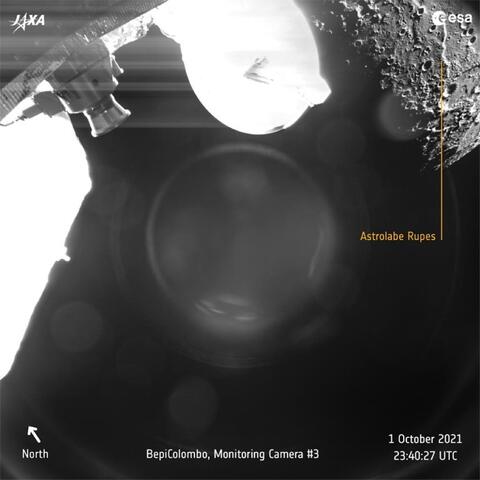ESA's BepiColombo sends rare greetings from Mercury
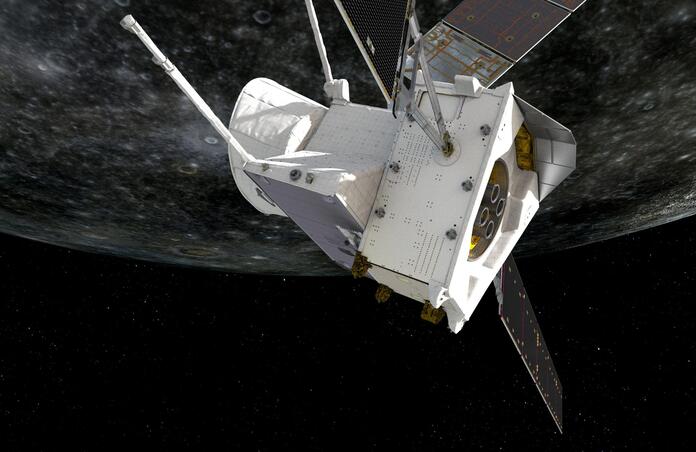
The BepiColombo mission delivers its first images of the least explored of the terrestrial planets of our Solar System: the small but no-less exciting Mercury.
BepiColombo, launched in 2018, is a joint mission between the European Space Agency (ESA) and the Japan Aerospace Exploration Agency (JAXA) and Europe’s first mission to Mercury. While we know quite a lot about Venus and Mars, and multiple space agencies have successfully sent spacecrafts to those two planets, Mercury is the least explored terrestrial planet in our Solar System. Don’t forget that since Mercury is so close to the Sun, a probe gets exposed to temperatures that easily reach 350° C, a challenge for our technologies. This justifies why missions to that planet have been very scarce, as well as recent, the only significant studies having been conducted by NASA’s Messenger mission from 2011 to 2015.
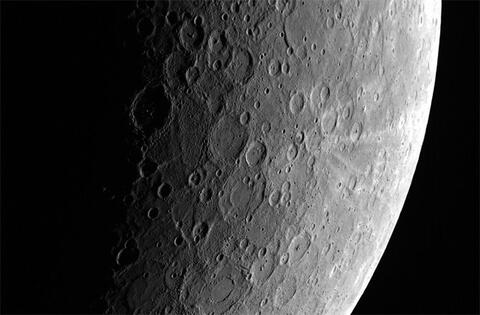
Far-off view 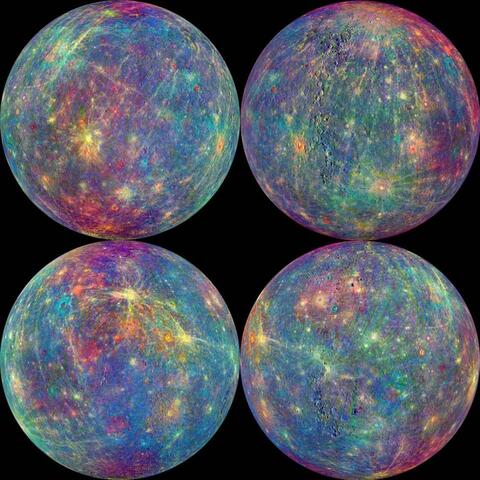
Atmosphere and Surface Composition Spectrometer
Now, on October 1, 2021, BepiColombo finally met its target and spent four hours taking stunning black-and-white images of not only the planet, but also of parts of the spacecraft itself, including the antennas. Since it arrived at the planet from the nightside, at the time of its closest approach (23:34 UTC at an altitude of just 199 km) the conditions weren’t favourable for imaging, hence the best images are the ones captured from an average distance of 1000 km. The white “blob” that appears on some snapshots is the magnetometer boom, an instrument of one of the two orbiters carried by the spacecraft.
The right one shows the magnetometer boom
After an initial flyby of Earth, two of Venus, and this one, BepiColombo will conduct a few more gravity assist flybys, the next one happening in June 2022. A gravity assist manoeuvre is essentially using a planet as a “slingshot” for a probe, altering its speed and trajectory, and is a move commonly used to save fuel. The ESA/JAXA mission will actually be “reaching” Mercury in late 2025 and entering orbit. At that point, the Mercury Planetary Orbiter (MPO) and the Mercury Magnetospheric Orbiter (MMO) will be fully deployed, as for now the images come from monitoring cameras on board of the spacecraft. A few instruments of the orbiter were tested during the flyby though, so researchers are waiting for that data in order to conduct preliminary analyses, but more importantly to check the general status of the orbiters.
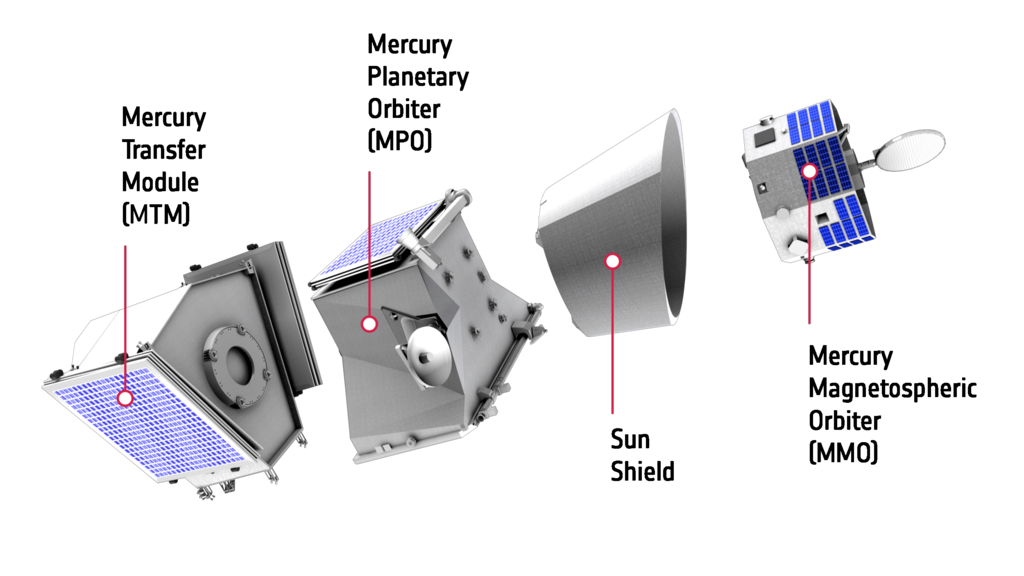
A major part of the mission will focus on mapping Mercury at different wavelengths – infrared with the MERTIS instrument, gamma rays with the MGNS, X-rays with MIXS, radio with MORE ... Collectively, the MPO and MMO have been fitted with an incredible 16 payloads. Added to that, key research questions about the smallest planet of our Solar System include the composition of rocks at its surface and investigating the volcanic activity that led to that; another aspect that will be covered is its formation, since the relative size of its core suggests Mercury once was larger and lost most of its rocky outer shell to a dramatic event like a giant meteor impact. With regards to this iron core, one more field of study will be the magnetic field, notably thanks to the aforementioned magnetometer on the MMO. Overall, astronomers are interested in understanding how a planet so close to its host star forms and evolves, and what specific processes occur.
BepiColombo is one of the very few (successful) missions to Mercury, and will give us fascinating insights about the small planet's history.
Cover Image: Artist's view of BepiColombo, ESA/ATG medialab
Image Credits:
1 & 2 - Messenger images, NASA/Johns Hopkins University Applied Physics Laboratory/Carnegie Institution of Washington
3, 4, 6, 7 - Annotated views of Mercury, ESA / JAXA
5 - BepiColombo parts, ESA

